UNDER THE SILVER LAKE: Neo-Noir Puzzle of a Movie Decrypted
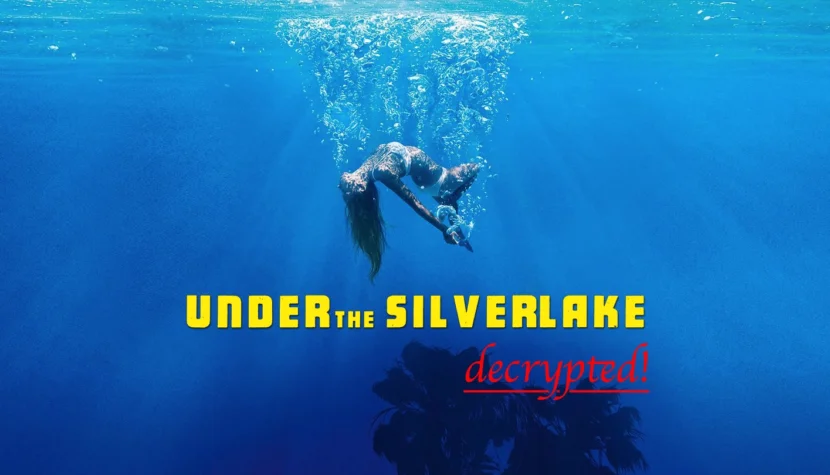
To avoid spoiling the plot for those who haven’t seen the movie yet, I’ll limit myself to stating that the story told here is an important, but not the most important, component of the presented world.
Like the main character, the viewer may at some point get lost in the tangle of threads, characters, places, and events of Under the Silver Lake. The only thing left for us then is to look in another direction, absorb all the unnecessary facts, and piece together a map that leads nowhere.
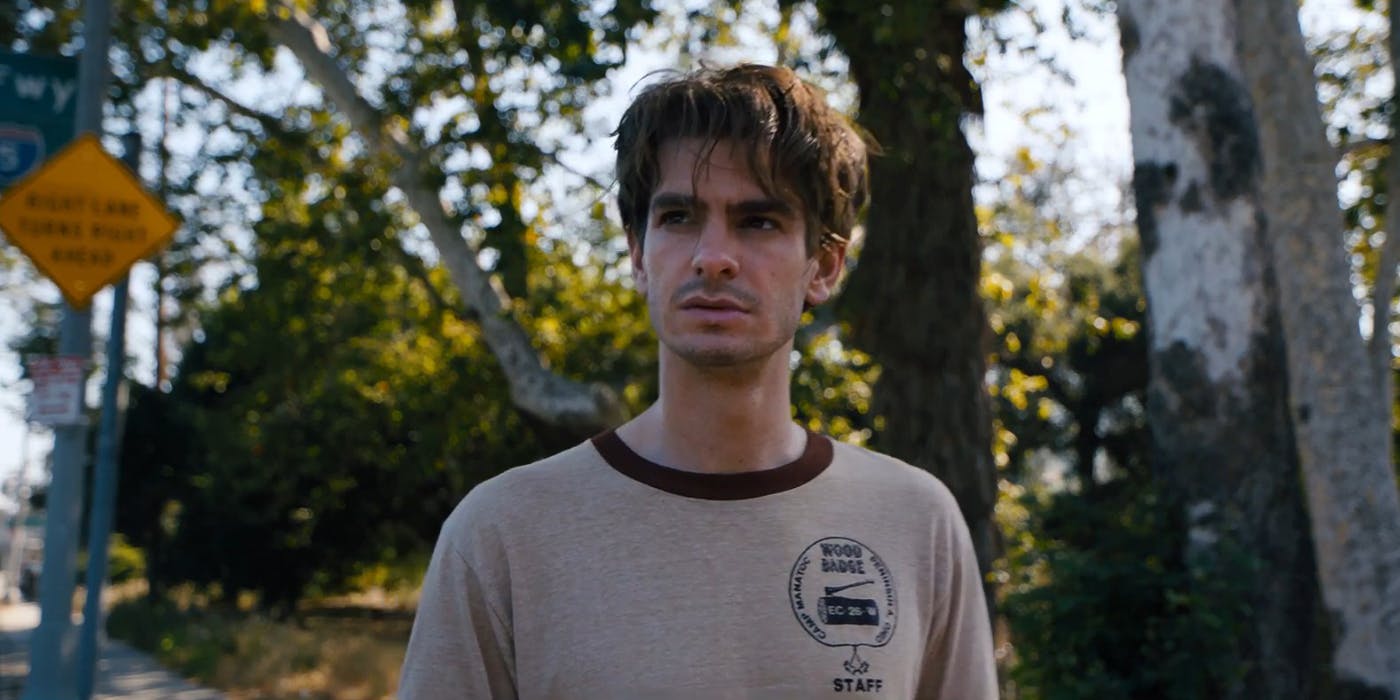
It’s easiest to classify Under the Silver Lake as neo-noir. This subgenre is a postmodern variation of the film noir style, which was coined by French film critics (specifically first used by Nino Frank) a few years after World War II. In short succession, various American films from 1941–1946 were shown in France. The French, passionate about analyzing films and seeking rules in genres, movements, and styles, noticed that despite thematic discrepancies, many American works shared similar components. These included black-and-white images with a tendency for strong contrasts, the use of chiaroscuro and sophisticated camera angles, tackling dark themes and references to psychoanalysis, wallowing in the depths of the human soul, an interest in crime and the dark side of life.

All these elements make up film noir, but it’s just a part of a larger picture. The movement exhausted itself in the late 1950s but found its second life in a series of films made in the late 1960s, during the abolition of the Hays Code, social and political changes, a period of nerves and paranoia. Referring to the detective film formula, many directors set their protagonists the goal of not finding the perpetrator of a crime, but rather finding some deeper truth and pattern in the situations they got entangled in. Crime ceased to be the domain of thoroughly evil characters, punishment ceased to meet antagonists, and the line between good and evil slowly blurred.

One of the more interesting examples of neo-noir is Robert Altman’s The Long Goodbye—one of the greatest “subversives” of American cinema. Using Raymond Chandler’s novel as source material, he transposed its action to the 1970s, to the milieu of Californian rich people—sexually indulgent, hungry for new experiences, seeking meaning in meaninglessness. It is to The Long Goodbye that Mitchell seems to refer in constructing his protagonist. Peeping on neighbors through a window directly references Hitchcock‘s Rear Window, but the naked, unsatisfied, and ultimately objectified neighbor is a clear nod to similar neighbors of Altman’s film protagonist. However, the protagonist of Under the Silver Lake is just a pale shadow of Chandler’s and Altman’s detective, the iconic Philip Marlowe. Instead of controlling the situation, keeping a cool head, and thinking logically, Sam gets caught up in a whirlwind of events, being constantly high, making absurd mistakes, and failing to grasp the world. And yet, he somehow manages to solve the mystery. One cannot help but feel that it was all just a matter of chance.
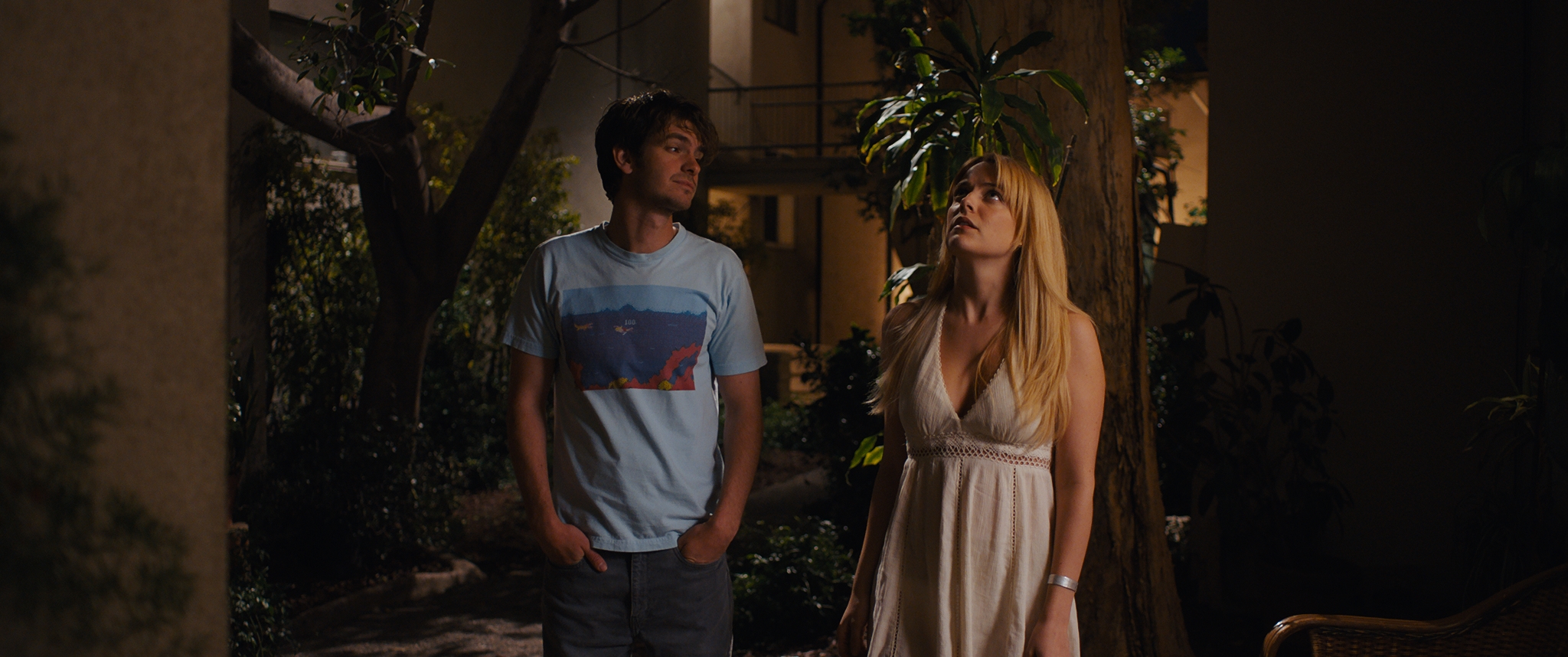
The protagonist of Under the Silver Lake must be a huge fan of Alfred Hitchcock’s work. Posters of Psycho and Rear Window hang on the walls of his room, and he himself behaves like James Stewart’s character in the latter. He spends entire days spying on neighbors, even using a similar binocular. And he also notices something strange and disturbing… going even further, Sam can be compared to the protagonist of Vertigo, who, in search of a mysterious woman, ventures into the city, wanders its streets, looks into buildings and locales, all the while experiencing it wrapped in a dreamlike atmosphere. Even the music, especially in the first part, has an element of the characteristic disquiet and—aptly—mystery found in Bernard Herrmann’s work. Hitchcock’s films and knowledge of these titles can be significant for understanding Mitchell’s story or at least the film’s message, but the director does not stop at references to the master of suspense.
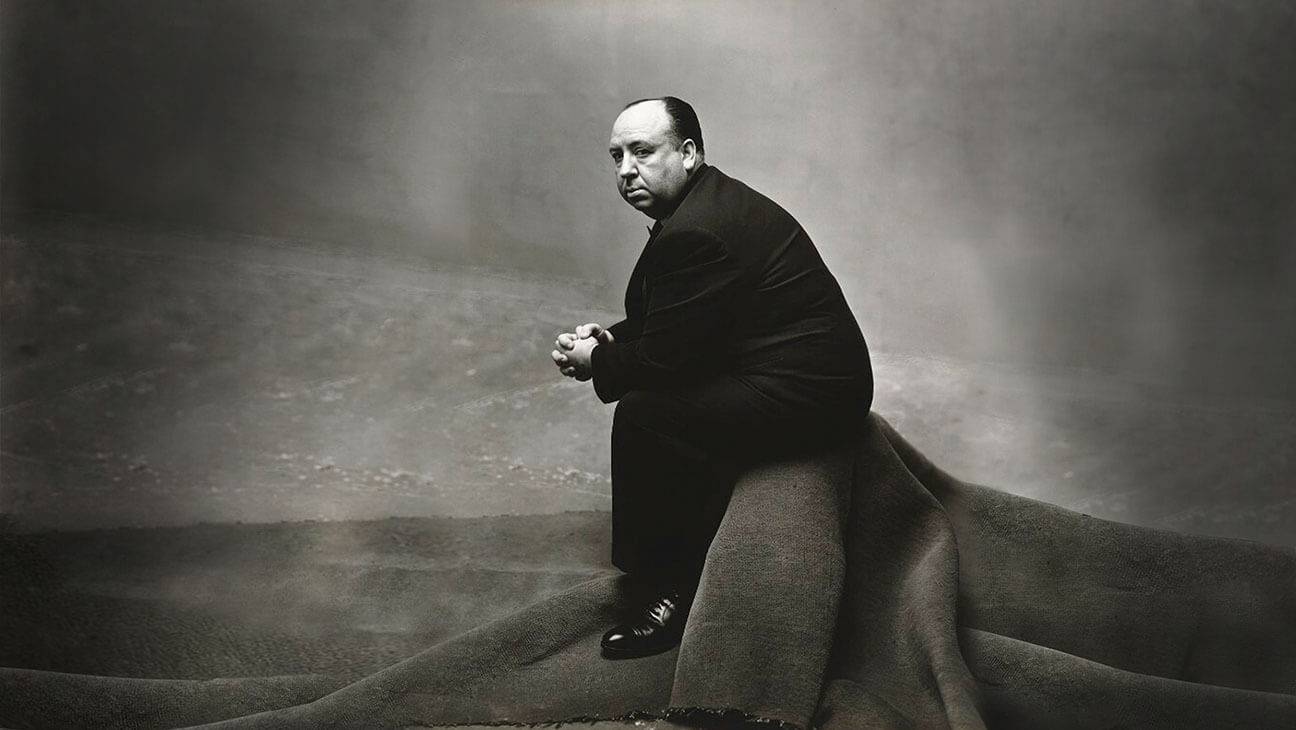
He defines or emphasizes his characters and the situations they find themselves in using references to pop culture works. For instance, the missing girl played by Riley Keough is a fan of the movie How to Marry a Millionaire. This fact means nothing to Sam at the moment of their first meeting but becomes significant when he discovers the girl’s true motivations. The protagonist’s mother—giving him advice over the phone—is a fan of an old silent film with Janet Gaynor—a relic of the past, highlighted by the actress’s grave in one of the scenes. When one of the characters—Millicent—is shot in the lake, her drifting body takes a position identical to that on the cover of Playboy adopted by Janet Wolf. Earlier in the film, we see this cover—we also learn that it is Sam’s favorite issue of the periodical.
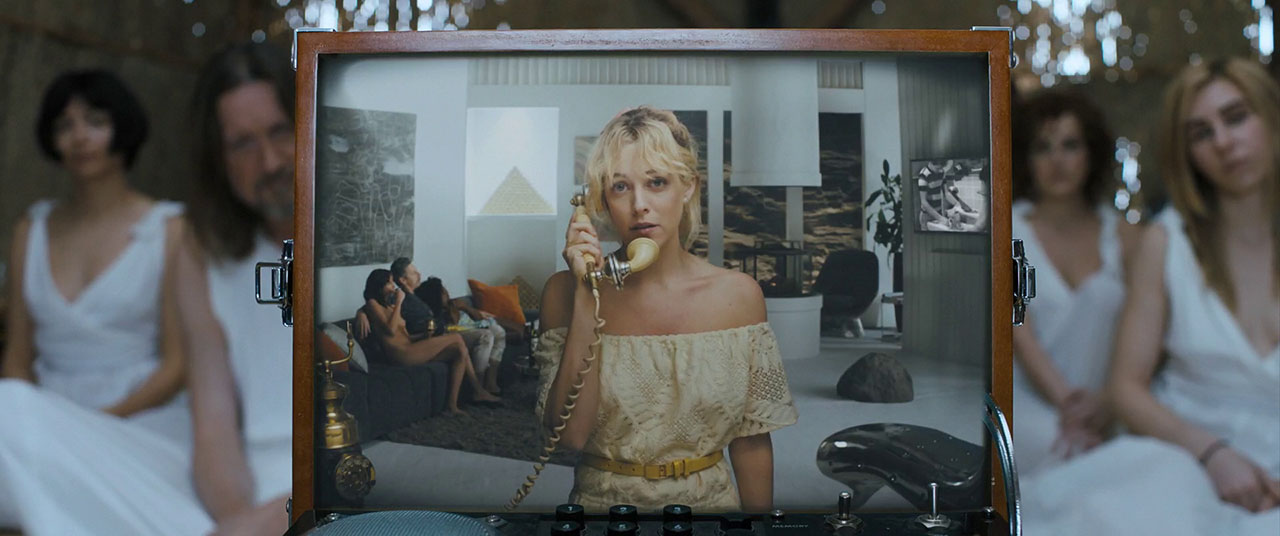
Finally, during one of his escapades, Sam ends up at a party under the slogan Night of Old Music. In the background, we hear the song Brimful of Asha by Cornershop, which automatically triggers nostalgic memories of the 1990s, but its lyrics tell us something more:
She’s the one that keeps the dream alive,
From the morning, past the evening, till the end of the light.
and further:
Illuminate the main streets and the cinema aisles.
We don’t care about no government warning,
About the promotion of the simple life and the dams they are building.

For Sam, the missing girl is the embodiment of a dream, a fantasy of being more than just a bread-eater, a marijuana smoker, and a consumer of meaningless content flowing from music, movies, literature, and comics. By the way, the world of music is associated with another interesting scene. At one point, the protagonist ends up in the office of a music producer who turns out to be the author of most of Sam’s favorite tracks. Everything Sam loves and adores is unified in one person, and the old musician did it all just for the money. Sam’s cognitive shock is so great that in an act of desperation, he kills the producer and smashes his head to a pulp…
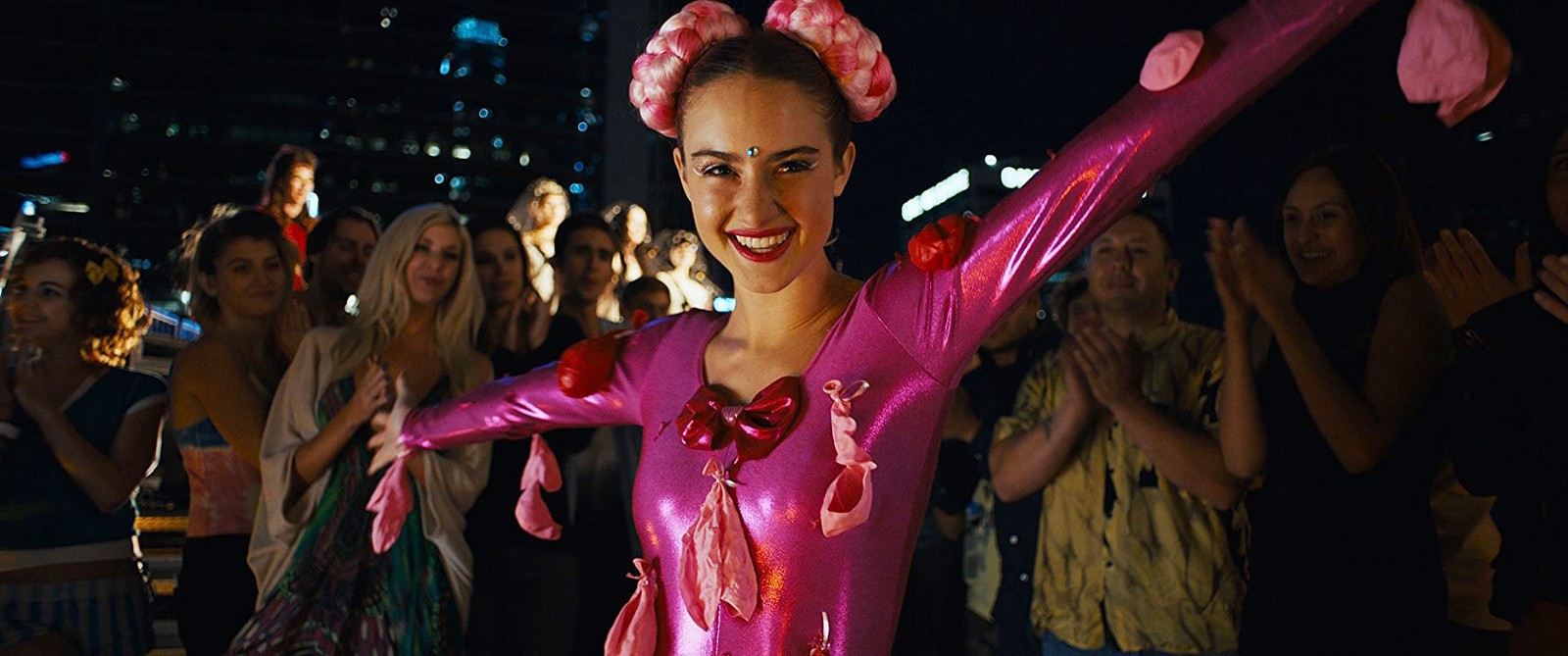
Mitchell utilizes the iconography of film noir through references to specific titles, but also to the recurring motifs of the genre—visual, sound, and narrative. Rather than paying homage, he tries to reuse standard tricks and give them a second life. When Sam tries to peek into the neighbor’s room, he bends the Venetian blinds (used by cinematographers to create characteristic patterns on the characters’ images, hiding part of the character in the shadow). On his way, he encounters many beautiful women, all of whom are interested either in marrying a millionaire or gaining a man’s attention—which usually leads to tragedy (from death to being locked in a concrete bunker for eternity).

The protagonist’s fridge, covered with photos and announcements, resembles a police board with a network of relationships between suspects, known from many movie police stations. Finally—the city itself, the thousandth incarnation of Los Angeles as a complex labyrinth, where most roads are dead ends. Mitchell goes a step further and builds a network of tunnels under the city, giving the term “underground” a literal meaning.

There is a risk that everything we think and write about Under the Silver Lake will turn out to be a bunch of nonsense because the director wanted to do to the viewer exactly what he did to his protagonist—lead him astray and prove that all the mystical aura around pop culture works is pointless and unnecessary. There are more questions in Under the Silver Lake than probable answers, and the mysteries remain mysteries forever—regardless of how close we are to discovering them. One of them, for example, is who killed those unfortunate dogs? The film does not provide an answer, but you can try to find it. Pay attention to the protagonist’s relationships with dogs and try to figure it all out. Maybe you’ll succeed after a few attempts—because Under the Silver Lake Under the Silver Lake.

